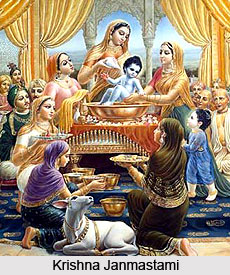 Janmotsava is the birthday celebration among the Hindus. The birthdays are celebrated all over the world not only for fun but also to set a goal and make some resolutions. According to Vedic Shastras, birthdays should be celebrated in accordance with Shantis that is some rituals should be meant so that the person`s life becomes free from malign effects and the wealth and prosperity is increased.
Janmotsava is the birthday celebration among the Hindus. The birthdays are celebrated all over the world not only for fun but also to set a goal and make some resolutions. According to Vedic Shastras, birthdays should be celebrated in accordance with Shantis that is some rituals should be meant so that the person`s life becomes free from malign effects and the wealth and prosperity is increased.
Starting from the first birthday till the fiftieth birthday, `Shantis`s should be performed according to the corresponding age for health and overall enhancement of the individual in all foci of life.
From fiftieth birthday onwards, special Shanti should be performed every fifth year like fifty-five, sixty, sixty-five and so on. This special celebration is done for raising the vital spirits, enhancing physical and mental strengths. It helps the senior citizens to overcome their sorrow and enjoy all the good moments in their lives.
The Janmotsava ceremony follows the Hindu Philosophy that one who is born has to die one day undoubtedly; however, as long as one lives, the quality of life has to be maintained and there should be harmony with the nature. God is with us all the times but he punishes unkind and cruel. So ultimate goal of Hindu Janmotsava is not only to live long, but also to live a quality life to attain `Moksha`.
In some parts of India, especially in South India the sixtieth birthday is celebrated with a huge ceremony, which is called as `Shashthipurti`. The different rituals observed in different birthdays are name differently as follows-
Abdapoorty Ayusha homam in first birthday; Vaishnavi Shanti on 50th, Varuni Shanti on 55th , Ugraratha Shanti on 60th , Mrutyanjaya Maharathi Shanti on 65th , Bhaimarathi Shanti on 70th, Aindri Shanti on 75th, Sahasrachandradarshana Shanti on 80th, Roudri Shanti on 85th,Kalswarupa Roudri Shanti on 90th, Tryambaka Mrutyanjaya Shanti on 95th and Mahamrutyanjaya Shanti on 100th birthday.
Hindus also observe the Janmotsava of various deities like Rama Janmastami, Krishna Janmastami, Radha Janmastami: also the Janmotsava of saints like Budhha jayanti, Mahabir Jayanti; and that of contemporary stalwart personalities like Gandhi Jayanti, Rabindra jayanti etc.




















